Last updated on October 12th, 2025 at 09:24 pm
Key Insights into Corfu’s Land, People, and Life
Corfu Island, in the sparkling Ionian Sea, is a Greek treasure known for its rich history, stunning landscapes, and vibrant culture.
Home to around 100,000 people, this island combines charming towns and scenic villages, fertile plains, and rugged mountains with more than 217 kilometers of pristine coastline.
Renowned as Greece’s ‘Emerald Island,’ it boasts lush greenery, over two million olive trees, and colorful wildflowers that paint the island’s scenery in vivid hues.
Whether you’re exploring its geography, learning about its people, or soaking in its natural beauty, Corfu offers a unique blend of history, culture, and breathtaking landscapes.
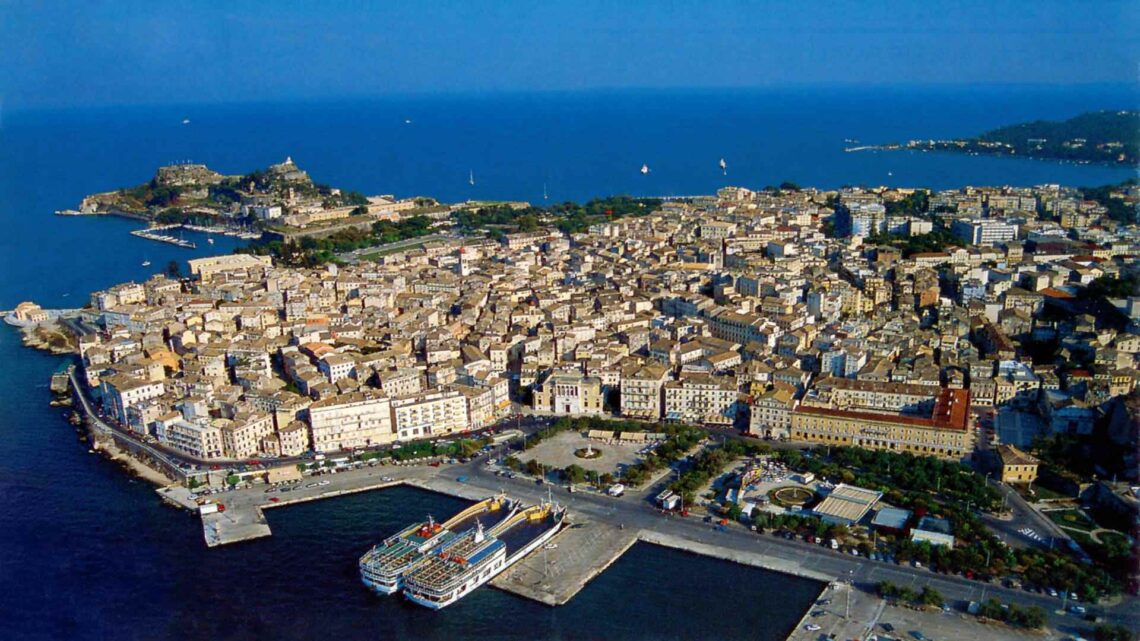
Beyond its natural beauty, Corfu’s history stretches back more than 3,000 years, making it a cultural and historical cornerstone of Greece. It has been inhabited since the Paleolithic era and was famously referenced in Homer’s Odyssey as the home of the Phaeacians.
Throughout history, the island has been a melting pot of influences, blending Greek, Venetian, French, and British cultures, all of which are still visible today in its architecture, traditions, and cuisine.
Visitors are drawn not just by the island’s serene beaches and hidden coves but by its rich cultural fabric.
Whether exploring ancient fortresses or wandering through charming villages, Corfu’s heritage is ever-present, leaving a lasting impression on all who visit.
Where is Corfu?
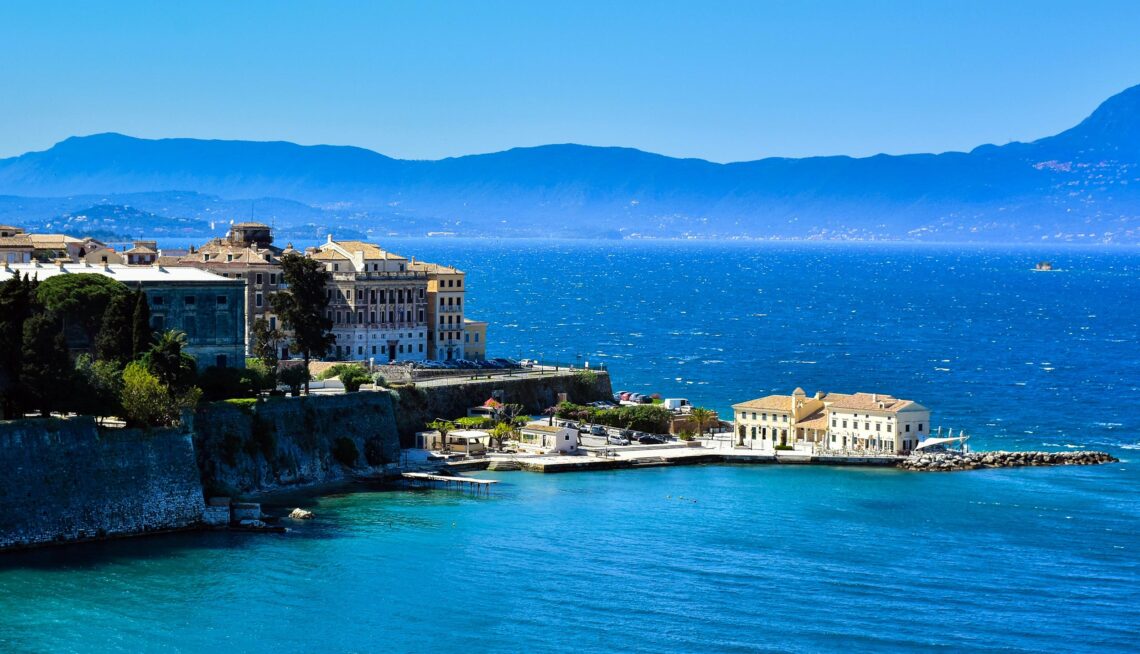
Corfu lies in the northwest corner of Greece, at the crossroads of the Ionian and Adriatic Seas, near the mainland and southern Albania. The Diapontia Islands, Paxos, and Antipaxos form part of its wider region, making it a hub of the Ionian archipelago.
Corfu’s Unique Features
Corfu boasts an array of distinctive characteristics that set it apart:
- The Esplanade and Liston Promenade: Spianada Square, one of Europe’s largest, is flanked by Liston, arched terraces with cafes and restaurants, central to the island’s events.
- Kumquat liqueur and spoon dessert: Known for its kumquat fruit, a Chinese tiny citrus brought here by the British, used in liqueurs and preserves, Corfu is one of the few European places where they are grown.
- Easter Traditions and celebrations: Unique celebrations include the throwing of clay pots from windows during the Holy Saturday Resurrection ceremony.
- Pontikonisi (Mouse Island): Near Kanoni, this small island with the Vlacherna Monastery adds to Corfu’s charm.
- Corfiot Bands and Music: The island’s distinctive musical tradition involves wind and brass instruments, especially during religious processions and festivals.
- Corfiot Dialect: The local dialect reflects the island’s diverse historical influences.
- Historical Crossroads: Influenced by Venetians, French, and British, Corfu’s history is evident in its architecture, traditions, and culture.
- Venetian Architecture: Notable for narrow streets, arched doorways, and pastel-colored buildings due to Venetian rule.
- Old and New Fortresses: Prominent landmarks offering panoramic views, dating back to Byzantine and Venetian times.
- Achilleion Palace: Built by Empress Elisabeth of Austria, this neoclassical palace features Greek mythology-inspired statues and gardens.
- Corfiot Cuisine: Influenced by Venetian, French, British, and Greek traditions, with dishes like Pastitsada, Sofrito, and Bourdeto.
- Population and Historical Significance: Corfu is the most densely populated Greek island, home to Greece’s first university, commercial bank, electricity factory, and modern theater.
- Palace of Saints Michael and George: The only Georgian-style palace outside the UK.
- Royal Birthplace: The Birthplace of many European royals, including Prince Philip of Edinburgh.
- The Durrells: The famous Durrell family resided here from 1936 to 1940.
- Cricket: Home to Greece’s only cricket team, a British leftover habit.
- Ottoman-Free: Corfu never experienced Ottoman rule, so Ottoman influences are absent.
The Name “Corfu”
The name “Corfu” comes after a paraphrasing by the Latins of the Greek word “Corypho,” meaning “tops,” a reference to the island’s peaks.
In ancient times, it was called Scheria in Homer’s Odyssey, and its sickle-like shape earned it the name Drepanon, meaning “sickle.” These names reflect the island’s deep cultural and linguistic heritage.
Corfu Population and Demographics
As of the 2021 census, Corfu Island has 99,000 residents, with 40,050 in the town of Kerkyra.
Its vibrant communities are spread across 208 villages, with a notable British presence, making up about 5% of the population.
It is the third most populous place in Greece, after Athens and Thessaloniki, and its diverse demographic reflects its appeal as both a holiday and a permanent destination.
How Big is Corfu?
Corfu spans 593 km², with an additional 47 km² from its neighboring islands, creating a total area of 640 km². It stretches 61 km in length and 27 km in width, with a picturesque 217 km coastline.
Despite some narrow roads between old villages, its extensive road network makes exploring the island easy.
Is Corfu worth Visiting?
Absolutely! Corfu’s stunning beaches, diverse landscapes, UNESCO-listed Old Town, and welcoming atmosphere make it an irresistible destination. Its vibrant culture and cuisine, coupled with a mild climate, ensure a memorable experience for every traveler.
How to Get to Corfu?

Corfu Travel Information
- By Air: Corfu International Airport connects to major European cities and Athens.
- By Ferry: Ferries run from Igoumenitsa and Patras, as well as other Ionian islands.
- By Bus: KTEL buses from Athens and Thessaloniki to Igoumenitsa, where ferries connect to the island.
Getting Around Corfu
- Buses: Green buses for long-distance travel, blue buses within Corfu Town.
- Car Rentals: Ideal for reaching remote areas—book in advance during peak season.
- Taxis: Available in Corfu Town; negotiate fares upfront.
- Scooters/ATVs: Fun for exploring; helmets required.
- Boat Rentals: Explore hidden beaches by the sea; no special license is needed for small boats.
- Walking: Perfect for Corfu Town and hiking in scenic areas.
Where to Stay: Best Resorts
- Family-Friendly: Saint George (Southwest coast), Glyfada, Agios Gordios, Pelekas (West coast), Ipsos, Dasia (East coast), Nissaki, Sinies (Northeast), and Benitses.
- For Nightlife: Sidari (North) and Kavos (South) are popular with young visitors.
Read more: Top Corfu Places and Resorts for Couples and Families
Monuments, Attractions, and Things to See
Corfu is rich in cultural landmarks, from the Byzantine fortress of Angelokastro to the Venetian Arsenal in Gouvia.
Notable sites include Achilleion Palace, commissioned by Empress Elizabeth of Austria, and attractions like the sea museum in Benitses and the olive museum in Kynopiastes.
See many of those in this map of Corfu’s historical sites.
Corfu Historical Sites & Points of Interest
Mouse Island and Vlacherna
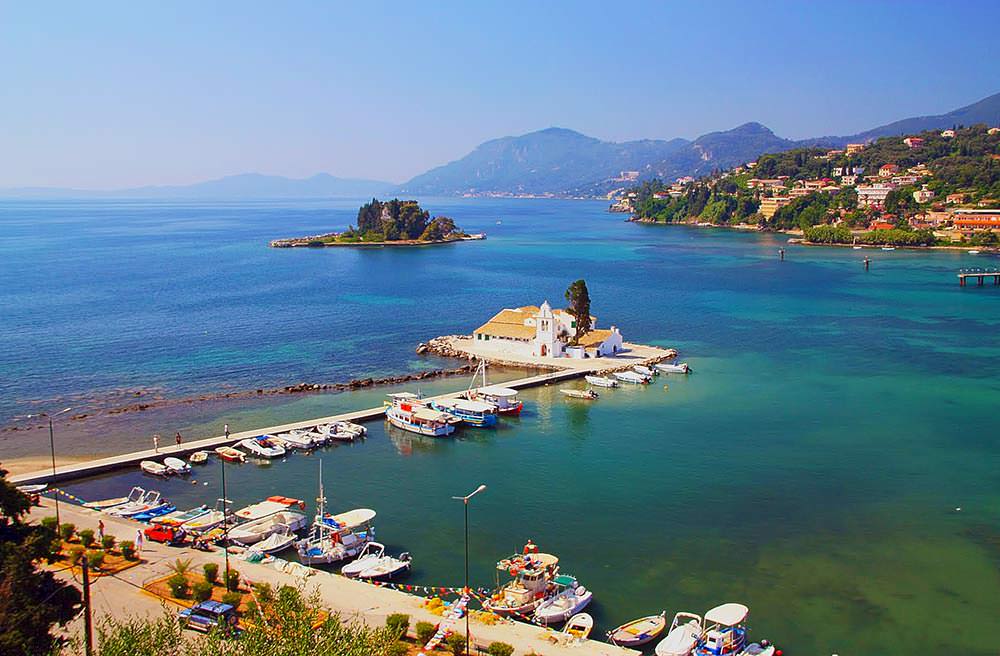
The Old Town, Kerkyra
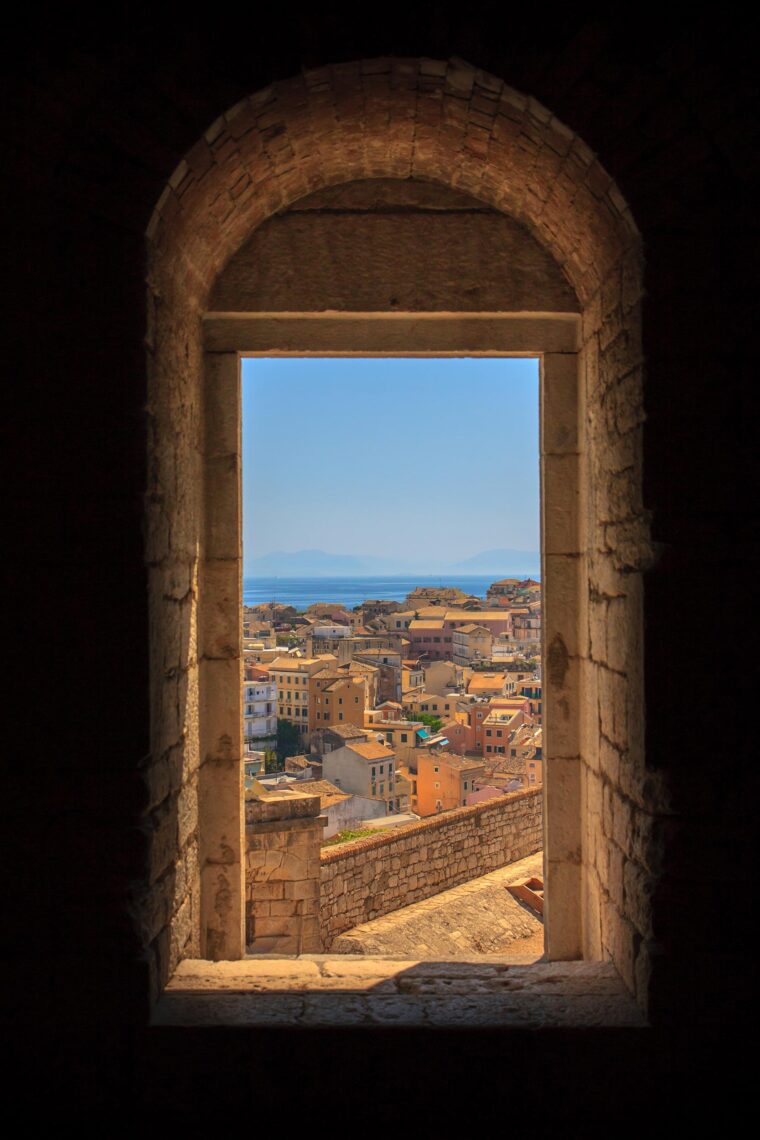
Kerkyra, Corfu’s UNESCO-listed old town, is a living time capsule blending ancient Greek, Roman, and Venetian influences.
Known as Kastropolis for its fortified character, it offers winding streets, pastel-colored buildings, and a mix of historical monuments and modern charm.
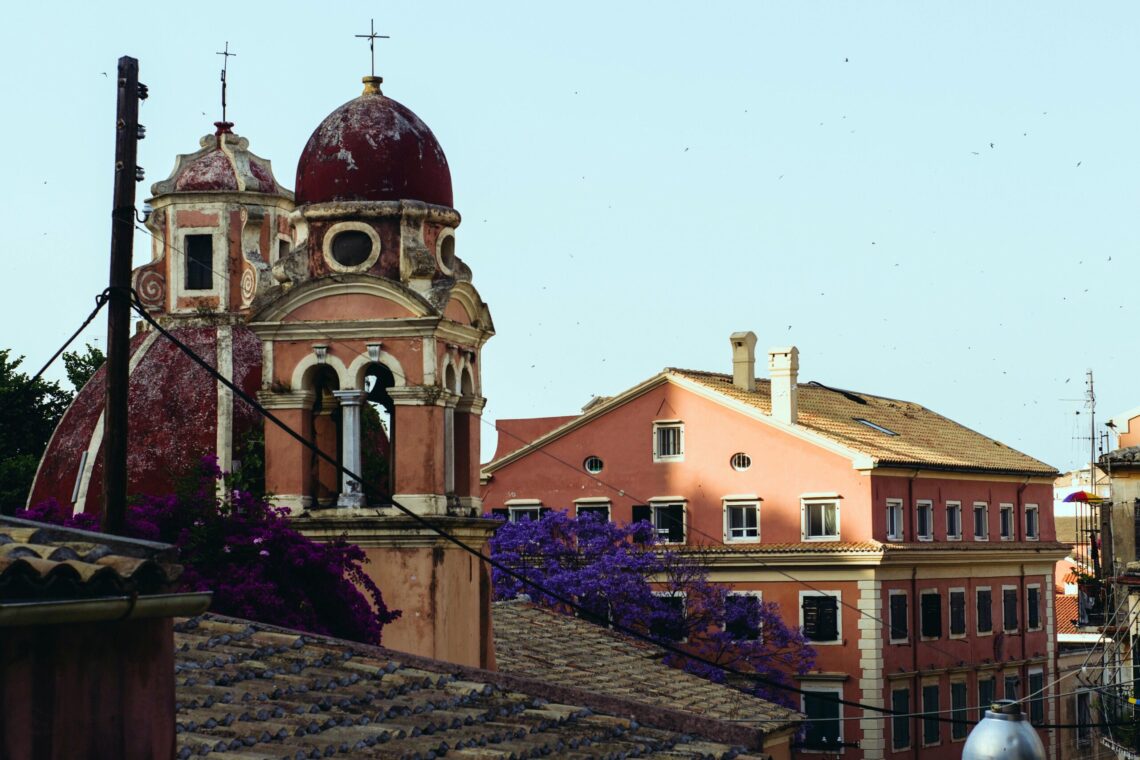
The Old Town of Corfu, known as Kerkyra, is a UNESCO World Heritage Site and is famous for its winding streets and pastel-colored buildings.
Corfu Town
Monuments to See in the Town

Corfu City is home to landmarks like the Museum of Asian Art at the Palace of Saints Michael and George, the old and new fortresses, Esplanade Square, and the Liston promenade.
Visitors can also explore Greece’s first modern university, the Ionian Academy, and the Ionian Parliament building.
Read about: Corfu Old Town: The Ultimate Guide to Kerkyra
Other main attractions:
- Achilleion Palace: A neoclassical palace with stunning views.
- Paleokastritsa: Famous for its beaches and a 13th-century monastery.
- Sidari and Canal d’Amour: Unique rock formations with a romantic legend.
- Angelokastro: A Byzantine castle with panoramic views.
- Mount Pantokrator: The highest peak on Corfu, great for hiking.
Read about all: A Journey Through Corfu’s historical sites and landmarks
Activities to Do in Corfu
- Beach Hopping: Explore Glyfada, Agios Gordios, and Myrtiotissa.
- Water Sports: Snorkeling, scuba diving, and sailing.
- Hiking: Corfu Trail and Korission Lagoon.
- Cultural Experiences: Visit museums and historical sites.
- Wine Tasting: Sample Corfu’s unique wines.
Accommodation
Corfu offers a variety of accommodations for every traveler, from luxury resorts and boutique hotels to charming villas and budget-friendly options.
Whether you’re seeking a beachfront getaway, a countryside retreat, or a stay in the heart of Corfu Town, you’ll find accommodations that suit your needs.
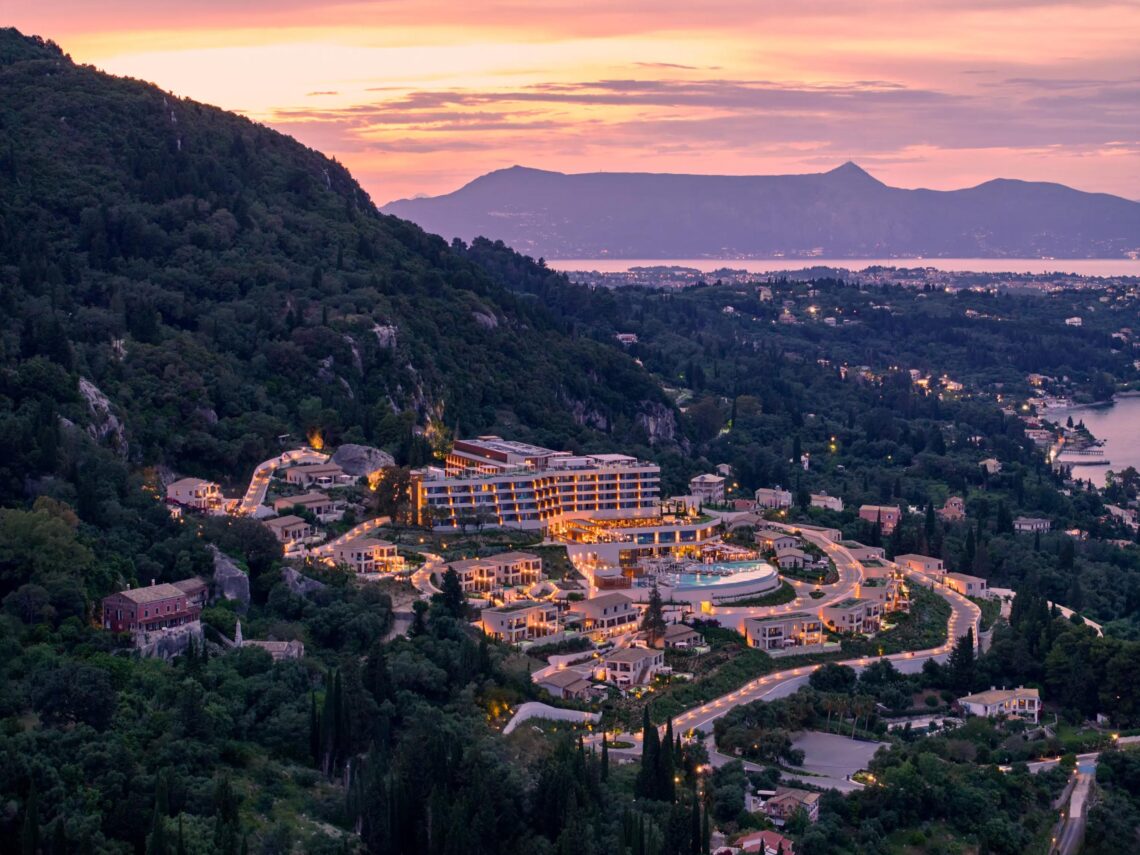
Angsana Corfu Resort & Spa
Angsana Corfu Hotel in Benitses is a new luxury 5-star hotel that sits on a hill on the north side of Benitses, 150 meters above sea level, providing uninterrupted views of the south of the island, a panoramic view of Corfu town, and the northeast part of the island. To the north of this hill is the famous Achilleion Palace.
The Angsana Corfu promises a slice of paradise with its breathtaking views of the Ionian Sea, lush gardens, and a pristine private beach. It’s not just a hotel; it’s an experience.
Luxury Resorts and Hotels
For those seeking indulgence, Corfu has high-end resorts that offer world-class amenities, such as private beaches, spas, gourmet dining, and breathtaking views of the Ionian Sea.
These resorts are often located along the island’s most scenic coastlines, blending relaxation and luxury.
Boutique Hotels
Corfu’s boutique hotels are known for their personalized service, unique charm, and intimate atmosphere.
Many are located in historical buildings in Corfu Town or scenic villages, offering a more authentic experience. Stylish interiors and attention to detail make these hotels memorable places to stay.
Villas and Apartments
For travelers who prefer privacy or are in larger groups, renting a villa or apartment is an excellent option.
Corfu offers a range of villas, from traditional countryside homes to modern beachfront properties with private pools.
These accommodations often come with fully equipped kitchens, spacious living areas, and outdoor spaces for enjoying the island’s natural beauty.
Budget-Friendly Options
For budget-conscious travelers, Corfu has a variety of affordable accommodations, including family-run guesthouses, hostels, and simple hotels.
These options provide comfortable stays at reasonable prices and are often conveniently located near beaches, attractions, and restaurants.
All-Inclusive Resorts
If you prefer a hassle-free holiday, Corfu’s all-inclusive resorts cover everything from meals to activities. These resorts are especially popular with families and couples looking to relax without additional expenses.
Agrotourism Stays
For a unique experience, consider an agrotourism property. These are often working farms or rural accommodations, allowing guests to experience Corfu’s agricultural traditions.
Guests might participate in olive harvesting, wine-making, or other local activities while enjoying rustic but comfortable lodgings.
Corfu offers warm hospitality and a range of accommodations that promise a memorable visit, whether in the vibrant Kerkyra Old Town or along the island’s beautiful beaches.
Tip: See some of the Best Hotels in Corfu

About Corfu’s Famous Beaches
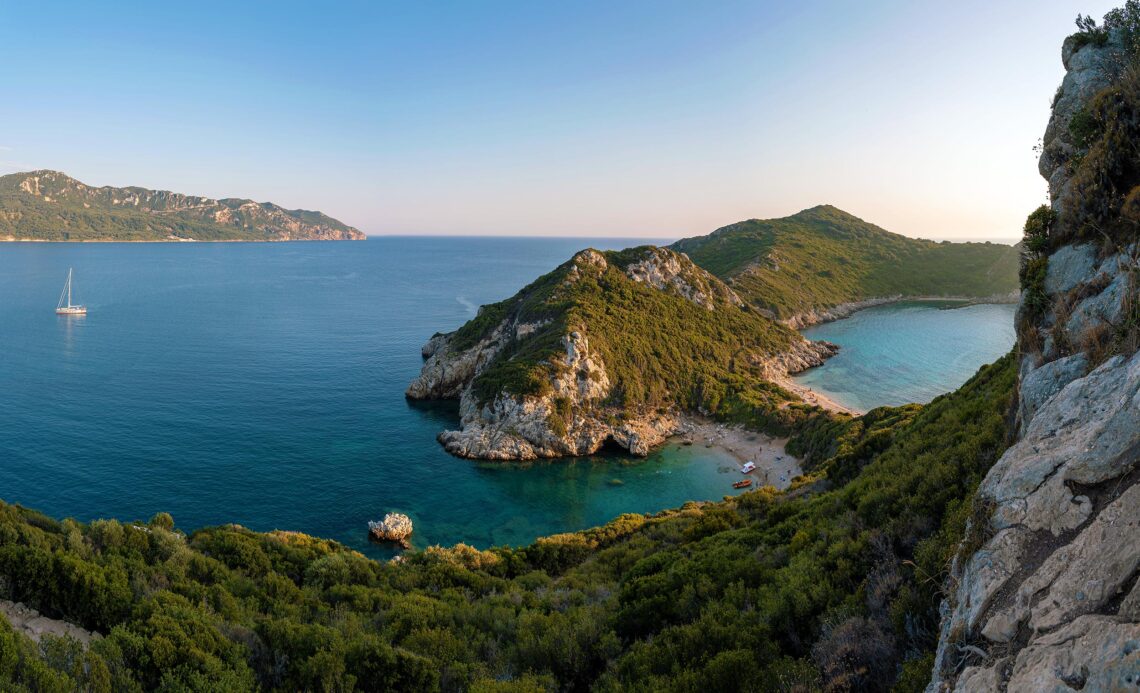
Corfu, known as the Emerald Island of Greece, is famous not only for its culture, history, and landmarks but also for its breathtaking beaches.
Surrounded by the turquoise waters of the Ionian Sea, Corfu has a 217 km coastline filled with stunning beaches to suit every preference.
The island offers more than a dozen expansive sandy beaches, along with smaller, unique shores.
Thanks to the dense road network, which dates back to British rule, most beaches are easily accessible, though a few hidden gems may require more effort to reach.
Here are some notable beaches:
- Paleokastritsa: Famous for its crystal-clear waters, lush cliffs, and excellent snorkeling opportunities.
- Glyfada: A vibrant sandy beach with beach bars and water sports, ideal for sunbathing and relaxation.
- Sidari (Canal d’Amour): Known for its unique rock formations and a legend that promises true love to those who swim here.
- Agios Gordios: A picturesque beach with golden sand and dramatic cliffs, perfect for watching sunsets.
- Barbati: A pebbled beach with tranquil turquoise waters, great for families and relaxation.
Each of Corfu’s beaches offers its charm, making it a paradise for beach lovers.
Read more: Best Sandy Beaches in Corfu
Geography: Is Corfu Hilly?
Mountains and Terrain
The island’s diverse terrain ranges from mountainous areas in the north to flatter regions in the south.
The northern part is dominated by Mount Pantokrator (914m) and Stravoskiadi peak (849m), with lower hills like Troumpeta (600m) extending westward.
The southern section is mostly flat, with hills near Chlomos and Saint Mattheos villages.
The central plain is scattered with small hills, enhancing its picturesque landscape and influencing local ecosystems.
Lakes and Rivers
- Lake Antinioti: Located on the north coast, this lake connects to the sea between Kassiopi and Roda, supporting rich wildlife.
- Korission Lagoon: A salty lake near Halikouna Beach on the southwest coast, serving as a stopover for migratory birds.
- Sidari River: Originates from Mount Troumpeta, flowing through Sidari.
- Other Rivers: Notable rivers include those near Potamos, Benitses, and Messonghi, as well as rivers at Gardenos Beach and Lefkimi.
These water bodies, along with Corfu’s waterfalls, enhance the island’s natural beauty and support diverse habitats, attracting nature enthusiasts.
Volcanic Activity
Corfu’s volcanic history is ancient and dormant. Mount Agioi Deka, located centrally, was once volcanic but is now extinct.
The island’s landscape, shaped by limestone, shale, and sandstone, remains peaceful with only weak and rare earthquakes.
Administrative Division
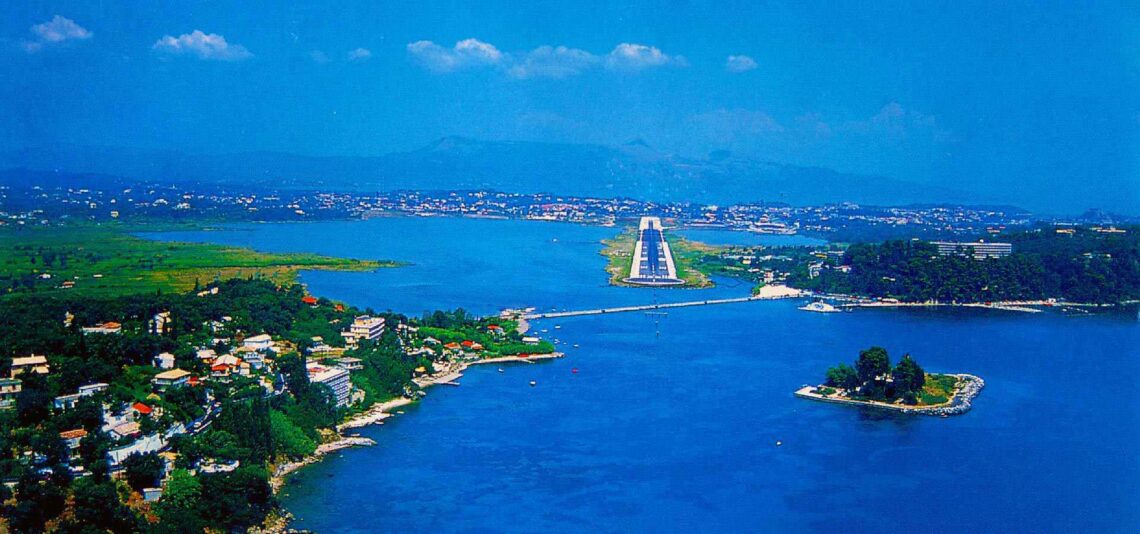
In 2011, the “Kallikrates” reform merged Corfu into a single municipality, but the 2018 “Kleisthenes” reform divided the island into four municipalities:
- Metropolitan Municipality of Central Corfu and Diapontian Islands: Population 68,500, includes Corfu Town and nearby islands.
- Municipality of the North: Population 17,200, covering areas like Saint George and Esperion.
- Municipality of the South: Population 15,700, including Lefkimi and Melitieon.
- Municipality of Paxos: Population 2,440, focused on Paxos Island.
These reforms streamlined local governance and improved efficiency.
Climate and the Weather
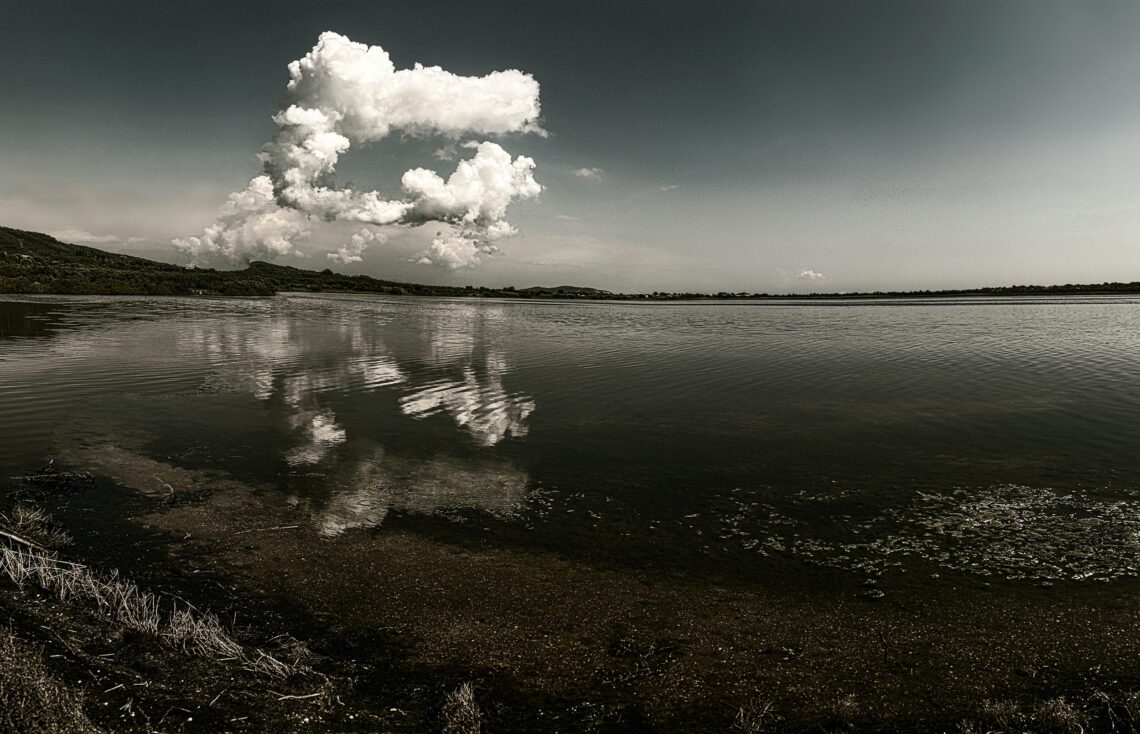
Corfu is known as Greece’s greenest island, thanks to its mild, humid climate and winter rains. Summers are hot and dry, while winters are mild with rare snowfall, mainly on Mount Pantokrator. Average temperatures range from 4-5°C (41°F) in January to 35°C (95°F) in July, sometimes exceeding 40°C (110°F).
Find more about Corfu Weather: The Climate and Temperatures per Month
Best Time to Visit
- Summer (June to August): Peak tourist season with hot, dry weather and a lively atmosphere.
- Spring (April to June): Mild weather, fewer tourists, and blooming flowers.
- Autumn (September to October): Warm weather, fewer crowds, and a warm sea.
- Winter (November to March): Quieter with mild weather, although some attractions may close.
Cultural Experiences in Corfu
Corfu’s rich cultural heritage offers visitors a variety of immersive experiences, from festivals and arts to historical landmarks and traditional cuisine. Below are some highlights.
Corfu Culture and Events
Learn more about Corfu Festivals and Events
Use our Interactive Corfiot Dialect Application to search among 5000 old Corfiot words.
Local Festivals and Events
- Easter Celebrations: Famous for grand processions, music, and the unique “pot-throwing” tradition in Corfu Town.
- Corfu Carnival: Vibrant parades, colorful costumes, and music reflecting Venetian influence.
- Music and Dance Festivals: Summer festivals feature classical concerts, traditional Greek music, and international performances.
Arts and Crafts
- Handmade Crafts: Explore markets for local pottery, lace, and olive wood carvings, offering unique souvenirs.
- Icon Painting: Visit workshops where local artists craft religious icons, an important tradition in Corfu’s Orthodox Christian culture.
Museums and Historical Sites
- Museum of Asian Art: This Corfu Town museum showcases a rare collection of Asian art.
- Archaeological Museum: Displays ancient artifacts, including the renowned Gorgon pediment from the Temple of Artemis.
- Folklore Museums: Located in villages like Sinarades and Acharavi, these offer a glimpse into Corfu’s past through local costumes and tools.
Religious Sites
- Monasteries and Churches: The island is home to beautiful religious sites like the Monastery of Paleokastritsa and the Church of St. Spyridon, known for their serene atmosphere and stunning architecture.
Traditional Cuisine
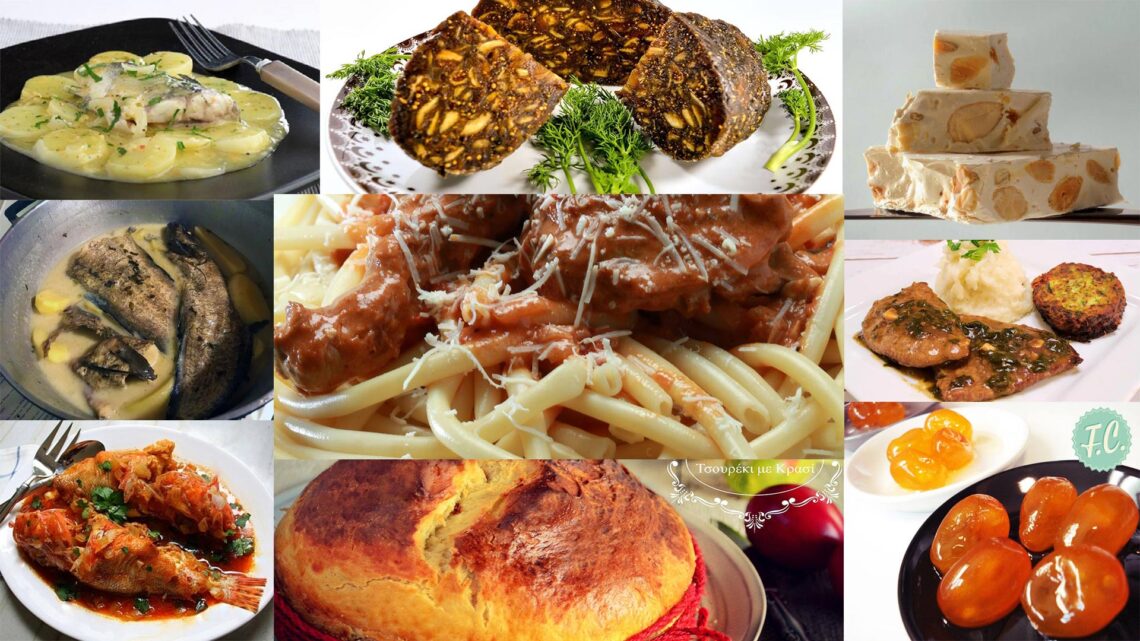
Corfiot cuisine is a delightful fusion of Greek and Italian influences, showcasing a variety of rich flavors.
Many traditional recipes came from Venice, adapted to incorporate local ingredients and the island’s unique climate.
The Venetians introduced tomatoes, beans, peppers, corn, coffee, chocolate, and spices that were previously unknown to the island.
Must-try dishes include:
- Sofrito: Veal cooked in a garlic and white wine sauce.
- Pastitsada: A spicy beef stew served with pasta, a Venetian-inspired dish.
- Bourdeto: A spicy fish stew, often made with scorpion fish, cooked in a rich red pepper sauce.
- Bianco: Fish cooked with garlic and lemon for a simple yet flavorful dish.
- Kumquat Products: Unique to Corfu, kumquats are used to make liqueurs, sweets, and preserves.
For an authentic experience, enjoy these traditional dishes at family-run tavernas, especially in Corfu’s villages. Many of these recipes have been passed down through generations.
Visitors can also explore the island’s wineries and olive oil producers for tastings, often accompanied by stories of their production methods.
Read: Corfu Cuisine: Traditional Recipes, Delights and Food
Historic and Archaeological Significance of Corfu
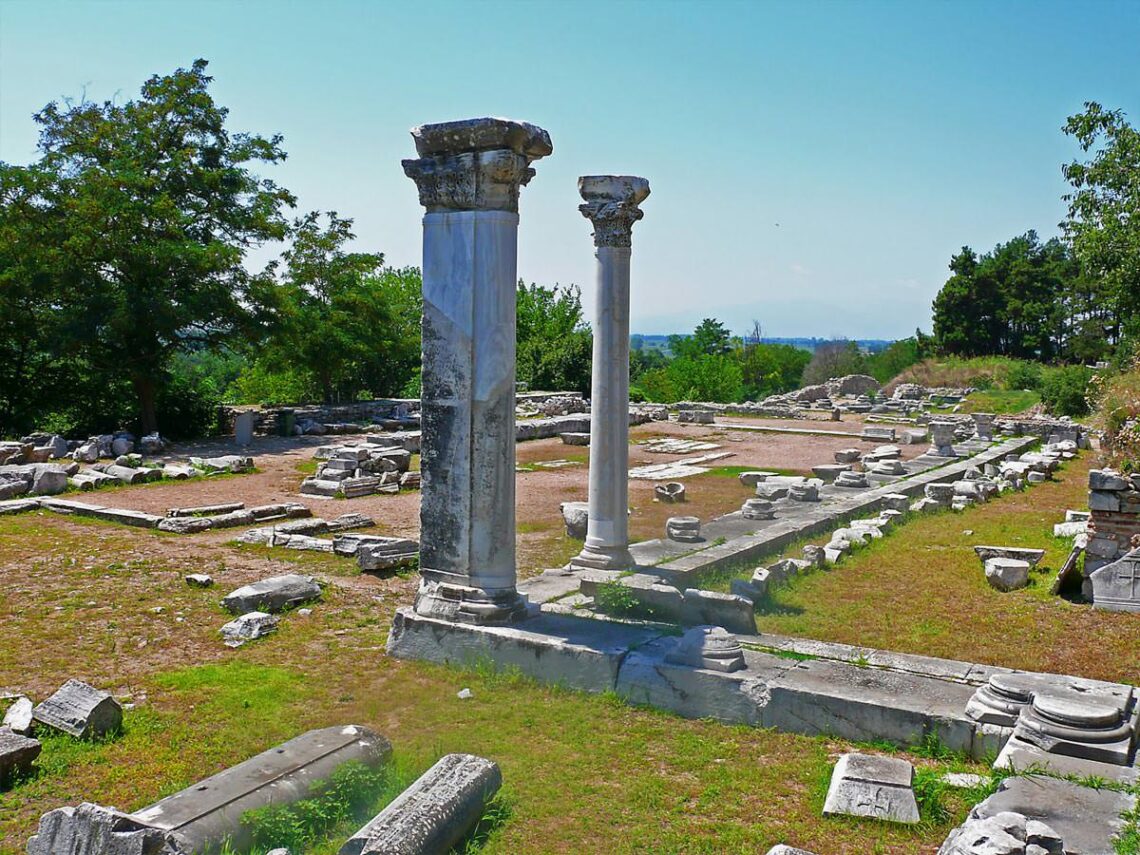
Paleopolis and Mon Repos Estate
Located just south of Town on the Kanoni Peninsula, Paleopolis is a significant archaeological site. It contains the remains of the ancient city of Kerkyra, founded by Dorians from Korinth around 775 BCE.
Nearby is the Mon Repos estate, a neoclassical villa built during the British period, adding further historical depth to the area.
Temple of Artemis
The goddess Artemis, who was a protector of Corfu in antiquity, was honored with a large temple.
The temple’s pediment, known for its intricate carvings, is one of the most notable artifacts and is preserved in the Corfu Archaeological Museum.
Corfu’s Naval History
Corfu was a pioneer in naval innovation, being the first ancient Greek city to build a fleet of warships. During the Peloponnesian War, Corfu played a key role, with a fleet of around 300 triremes at its peak.
Prehistoric Corfu
Corfu’s history stretches back to prehistoric times, with evidence of Neolithic occupation dating to around 6000 BCE. This ancient heritage highlights the island’s deep historical roots.
- Sidari (Northwest): Archaeological discoveries near Sidari have revealed one of the oldest human settlements on the island. Tools, pottery, and other artifacts shed light on the early inhabitants of Corfu.
- Chalikounas (Southwest): Further Neolithic sites near Chalikounas suggest that Corfu was inhabited long before the arrival of the Dorians, marking it as an early cradle of civilization in the region.
Corfu’s strategic location and fertile lands made it a desirable place for settlers throughout history, shaping the rich cultural and historical tapestry that endures today.
Is Corfu a Party Island? Nightlife

Corfu’s nightlife scene comes alive, especially in the summer. Key hotspots include Corfu Town (Kerkyra), Kavos, Sidari, Ipsos, and Messonghi, offering something for everyone.
- Corfu Town: Known for its trendy bars and cafés, the Liston area is perfect for a chic night out, offering a mix of lounges and lively dance venues.
- Kavos: On the southern coast, Kavos is famous for its energetic party scene, with numerous bars and clubs staying open until the early morning.
- Sidari: Offers a more relaxed nightlife compared to Kavos, featuring bars and clubs for those seeking a laid-back evening.
- Other Hotspots: Clubs scattered across the island, including popular areas like Glyfada Beach and resorts such as Paleokastritsa, cater to a range of tastes.
Whether you’re looking to dance the night away or enjoy a casual evening out, the nightlife here has something to offer for all preferences.
Read: Corfu at Night: Is Corfu a Party Island? Clubs & Bars
Environment and Biodiversity
Corfu’s diverse environment spans lush forests, green mountains, and vast sandy beaches reminiscent of the Sahara. Each area hosts unique ecosystems, inspiring writers, artists, and cultural figures worldwide.
Photos by Pascal Debrunner, HP Koch, Erik Karits, and Ijon Tichy on Unsplash
The landscape is incredibly varied, offering everything from green mountainous regions to picturesque sandy beaches.
The island is home to a rich array of flora and fauna, with unique ecosystems supporting diverse species of birds, insects, and wildlife, some of which are not native to the Mediterranean.
This diversity captivated the naturalist Gerald Durrell, who extensively documented Corfu’s biodiversity during his family’s stay on the island from 1936 to 1940.
Among the island’s most dominant trees is the olive, which forms a key part of Corfu’s landscape, alongside abundant citrus fruits. Tall, slender cypress trees, a reminder of Corfu’s Italian heritage, are also widespread across the island.
Notably, the island receives the highest rainfall in Greece, resulting in its fertile soil. In theory, this allows the island to be self-sufficient in agriculture.
However, the rise of tourism and other economic factors has shifted the local population toward other forms of livelihood.
Useful Telephone Numbers and Tips
- Emergency Services (Police, Fire, Ambulance): 112
- Police: 100
- Fire Department: 199
- Ambulance Service: 166
Medical Services
- Corfu General Hospital: +30 26610 88200
- First Aid (Emergency Medical Assistance): +30 26610 28258
- Pharmacy On-Call Service: +30 26610 41100
Transportation
- Corfu International Airport “Ioannis Kapodistrias”: +30 26610 89600
- Corfu Port Authority: +30 26613 65200
- KTEL Corfu (Intercity Bus Service): +30 26610 30627
- Taxi Service: +30 26610 33811
Tourist Information
- Tourist Police: +30 26610 39590
- Corfu Tourist Information Office: +30 26610 37633
Other Useful Numbers
- Municipality of Corfu: +30 26613 62100
- Public Power Corporation (DEI): +30 26610 38000
- Water Supply and Sewerage Company (DEYAK): +30 26610 39910
These numbers can be very helpful for both residents and visitors in various situations.
Helpful Things to Know
- Language: Greek is the official language, but English is widely spoken in tourist areas.
- Currency: Euro (€).
- Etiquette: Greeks are known for their hospitality. Greeting people with a handshake or kiss on both cheeks is customary.
- Religion: Greek Orthodox is the predominant religion. Respect local customs, especially when visiting churches and monasteries.
- Festivals: Easter is the most important holiday, celebrated with processions and feasts. The Corfiot Carnival and various music festivals are also popular.
Practical Tips for Visitors
- Transportation: Renting a car is the best way to explore the island. Buses are available but may be less frequent in rural areas.
- Safety: Corfu is generally safe, but take standard precautions against petty theft.
- Health: Tap water is safe to drink. Healthcare facilities are available in Corfu Town and the larger villages.
- Electricity: The standard voltage is 230V, and the plugs are Type C and F.
Unique Experiences to Look for
- Olive Oil Tours: Visit olive groves and learn about the production process.
- Boat Trips: Explore nearby islands like Paxos and Antipaxos, or take a day trip to Albania.
- Traditional Villages: Visit villages like Pelekas and Lakones to experience local life.
- Cycling Tours: Discover the island’s beauty on two wheels.
- Local Markets: Explore markets in Corfu Town for local products and souvenirs.
Is Corfu Expensive?
- Cost of living: The cost of living and travel expenses in Corfu, Greece, can vary depending on factors such as the season, accommodation choices, dining preferences, and activities.
- In general, compared to other popular European destinations, Kerkyra can offer relatively affordable options for accommodations, food, and activities, particularly if you avoid peak tourist seasons.
- Budget and plan: However, it’s essential to budget and plan to ensure your expenses align with your financial preferences and expectations.
See more: Corfu Addresses, Phone Numbers, and Useful Tips
Maps
- Corfu Island Map: Highlighting major attractions, beaches, and transportation hubs.
- Walking Maps: For Corfu Old Town and popular hiking routes.
Read more: See the Best Corfu Maps
Wrapping Up
Corfu is captivating visitors with its rich history, vibrant multicultural heritage, and breathtaking landscapes.
From its enchanting medieval old town to its stunning, expansive beaches, it offers a unique and unforgettable experience.
The longer you explore, the deeper you fall in love with its charm and beauty, making it a truly exceptional place in Greece.
With no doubt, Corfu is an island well worth visiting. To explore it and understand it, two or three weeks are not enough. It is like a great work of art that reveals itself more and more the longer you look at it.
AtCorfu.com is an independent informational resource on Corfu, offering local insights, history, and travel guidance since 2015. All content is based on firsthand knowledge and contributions from local experts.


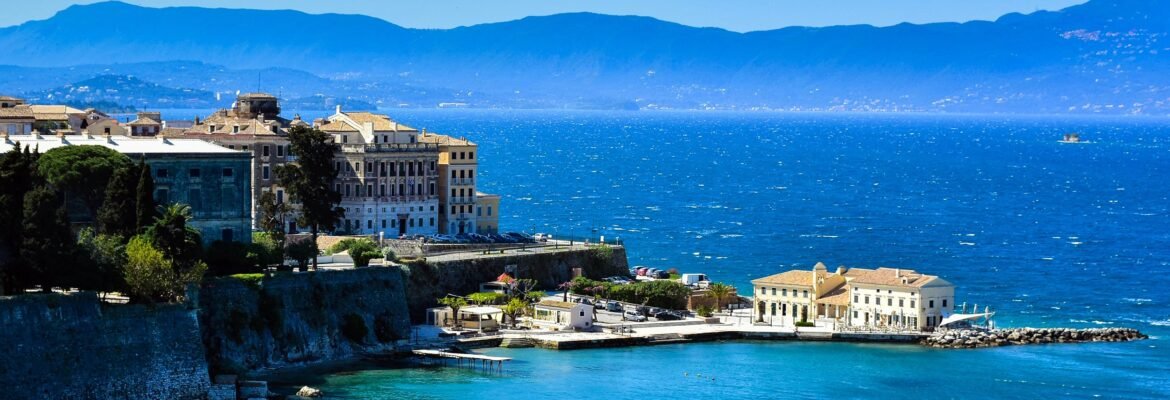


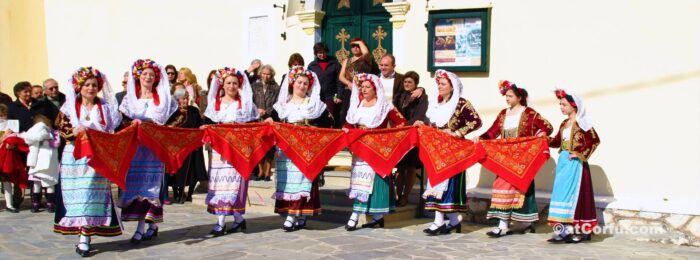
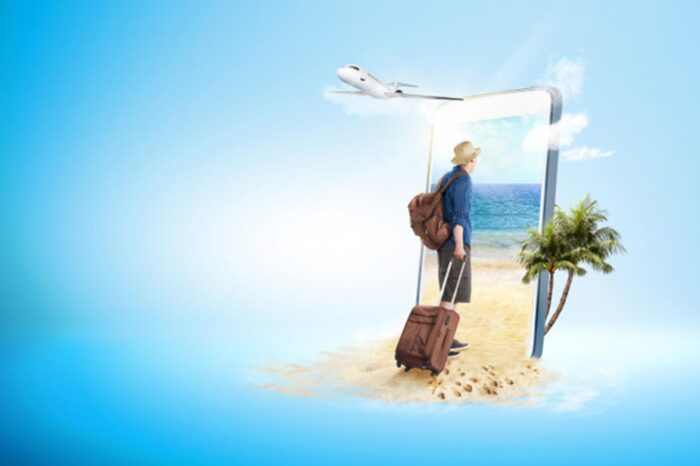

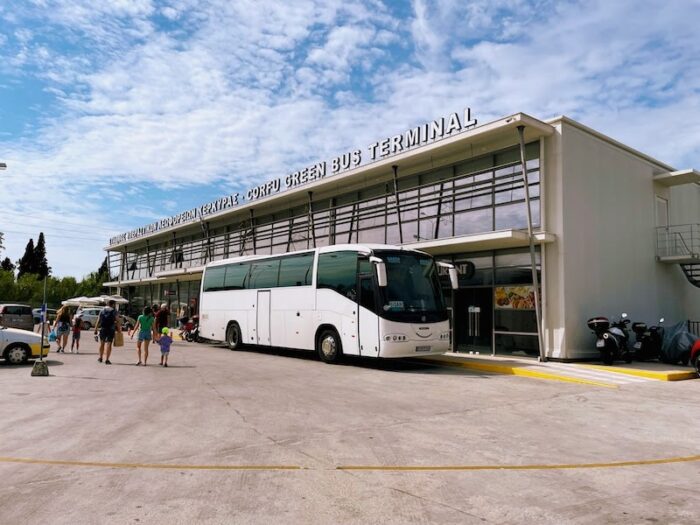
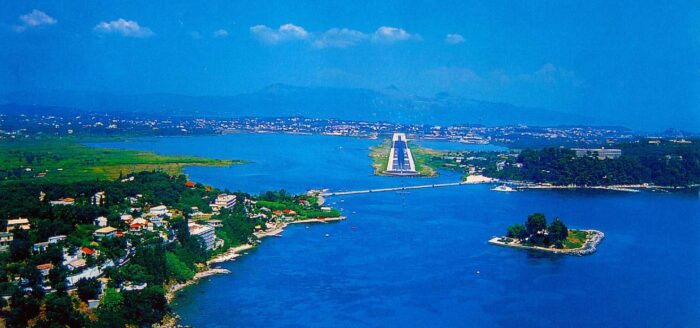

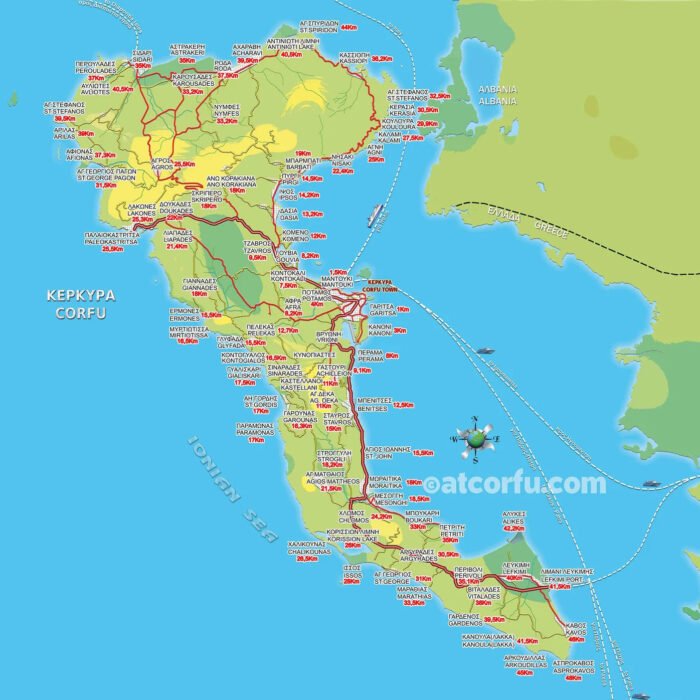

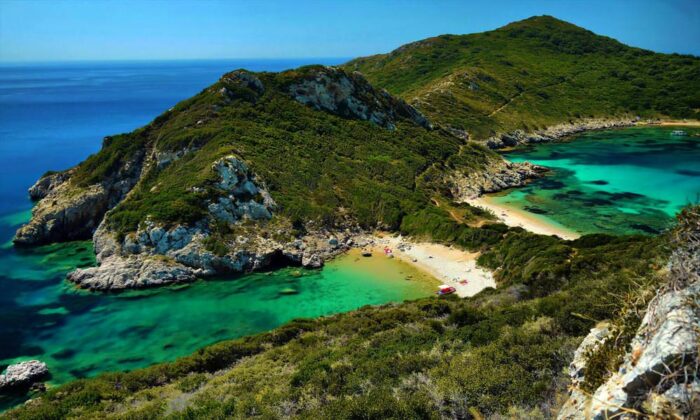
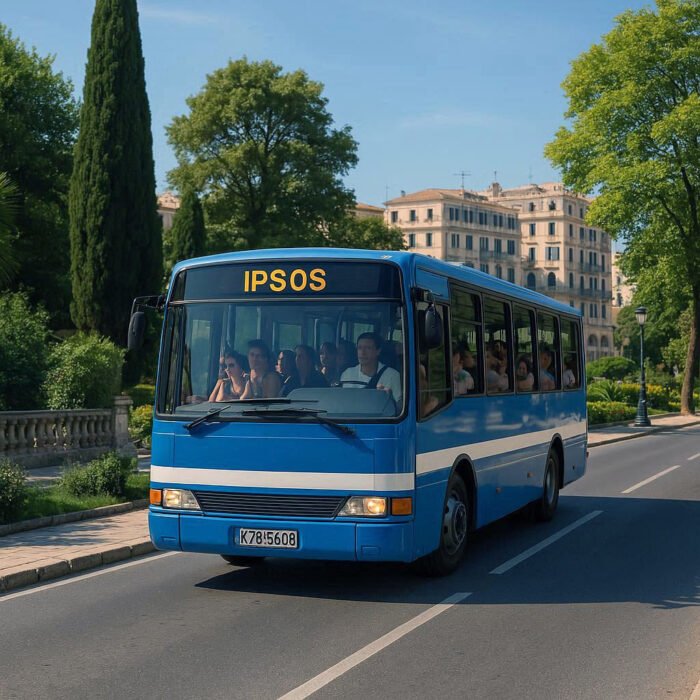
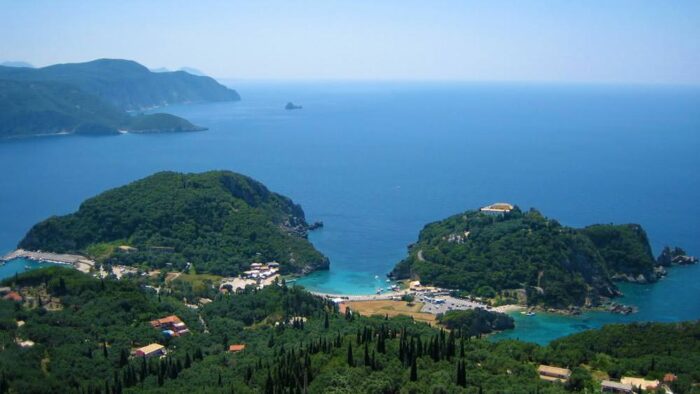
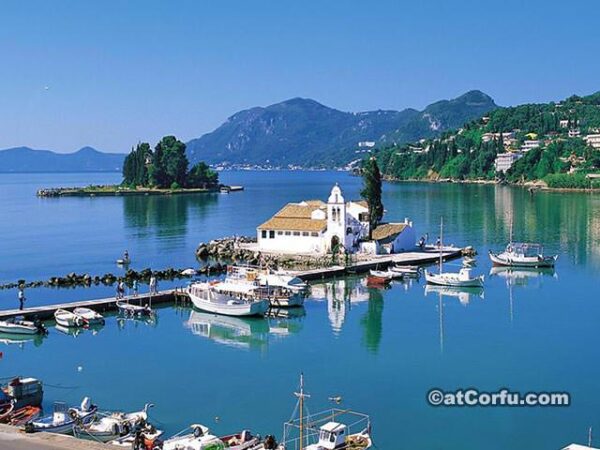

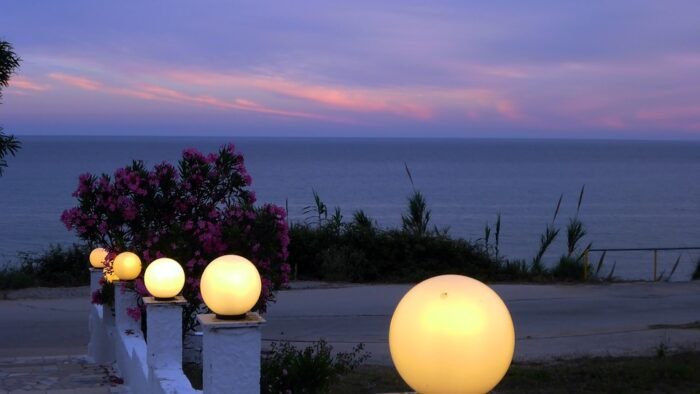



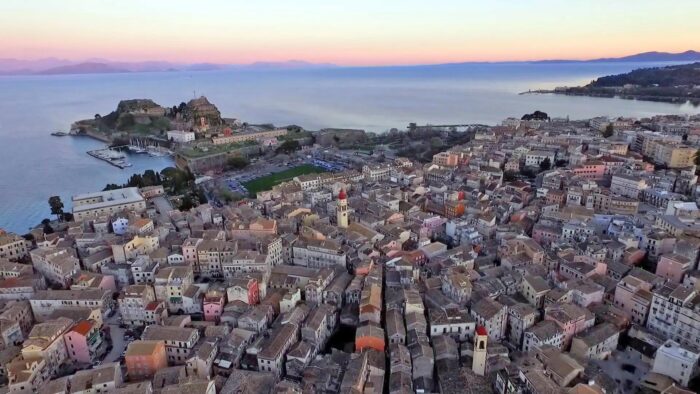
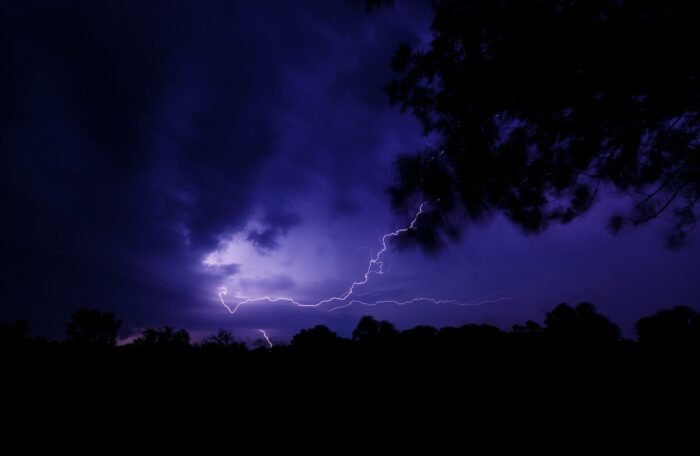
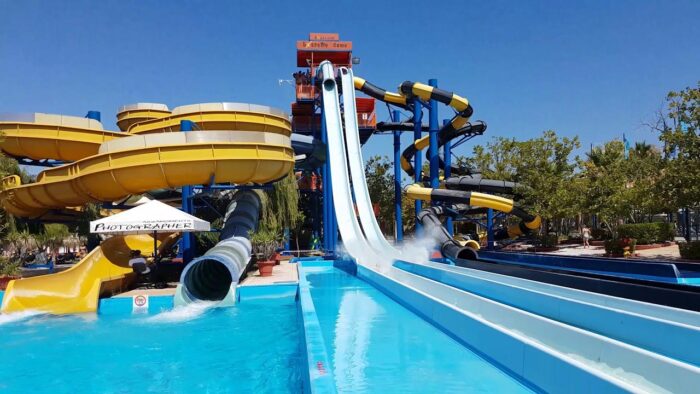

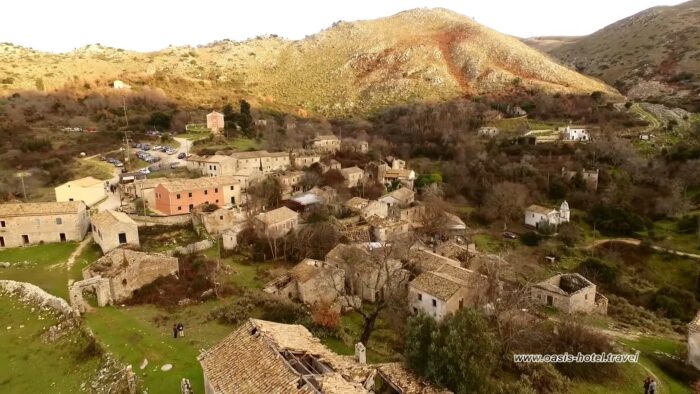

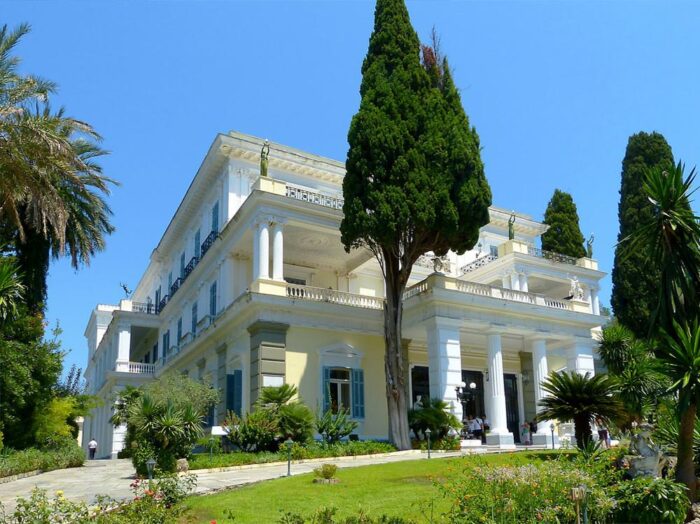

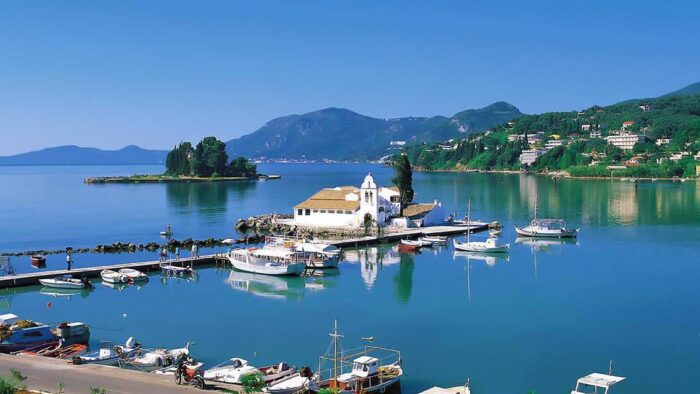
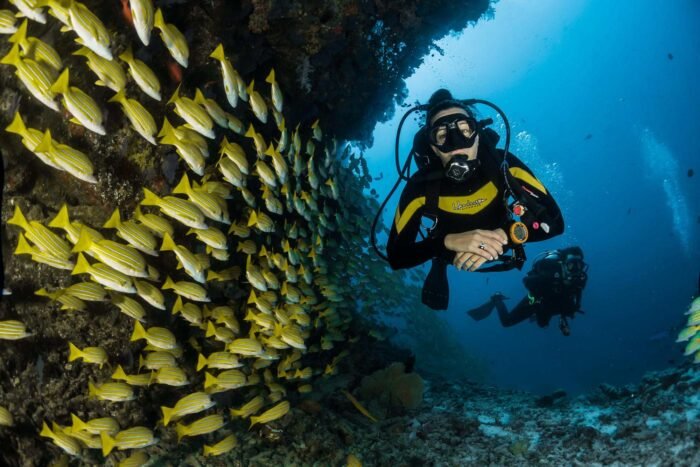
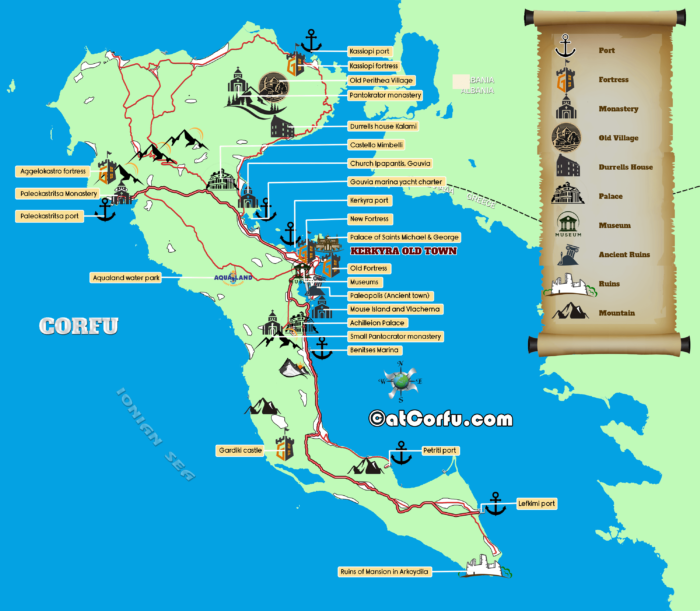
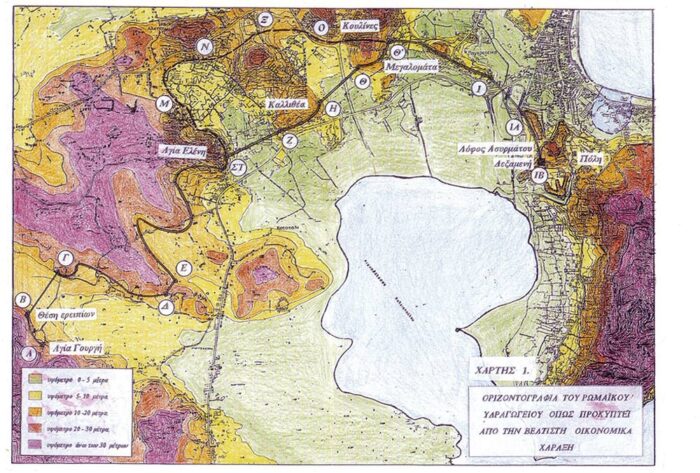
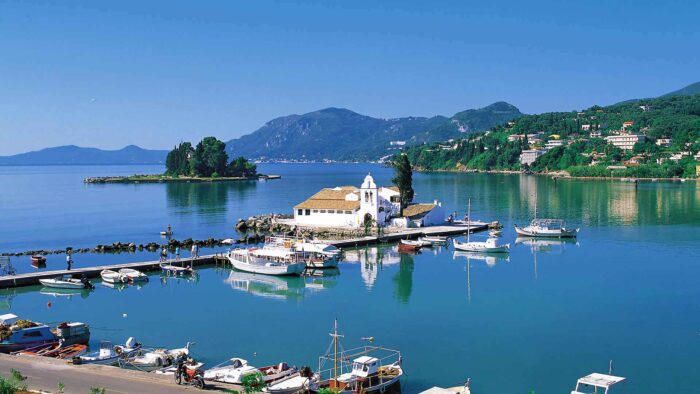

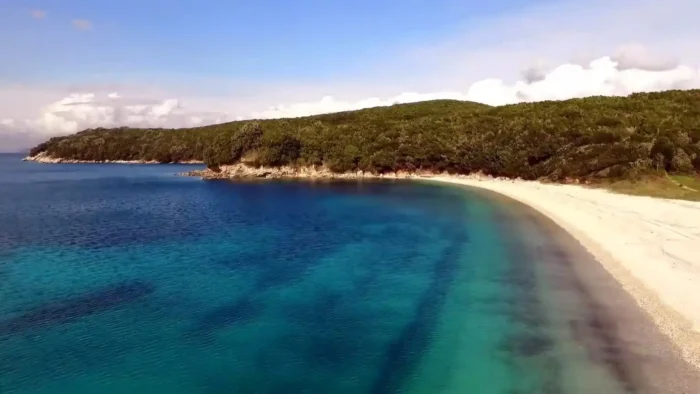



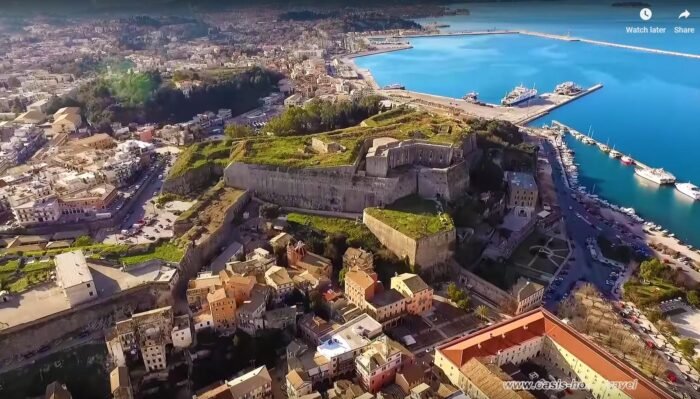

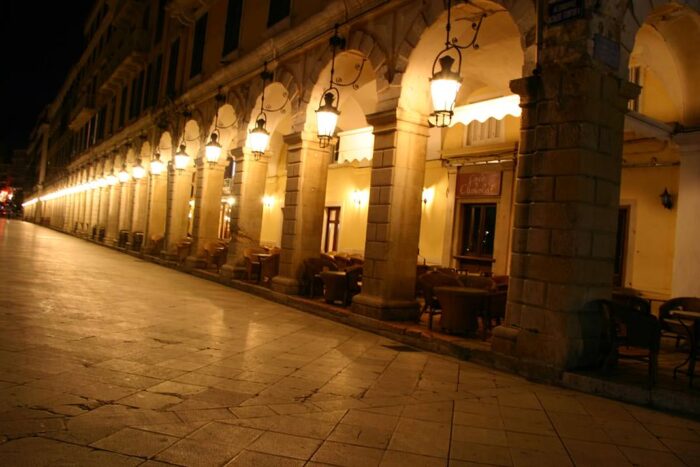
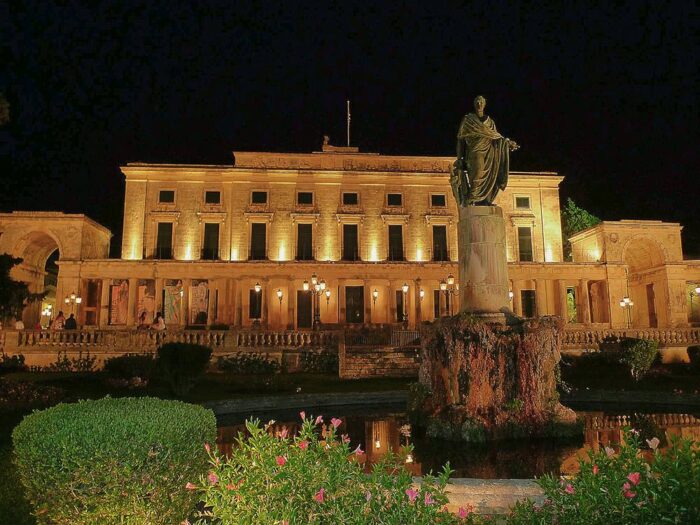
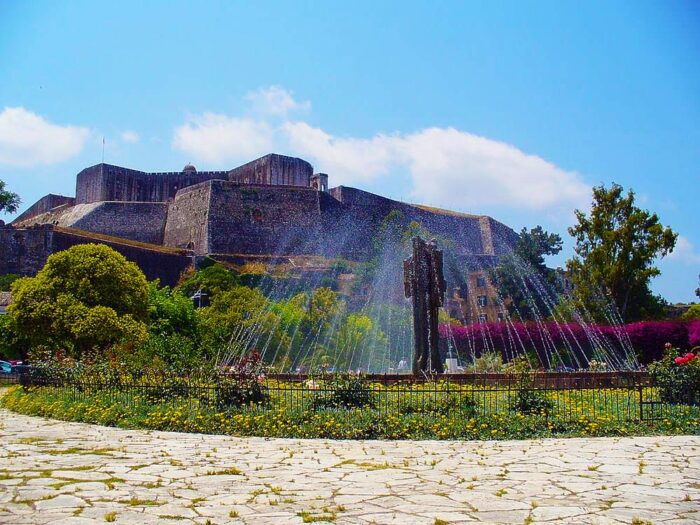

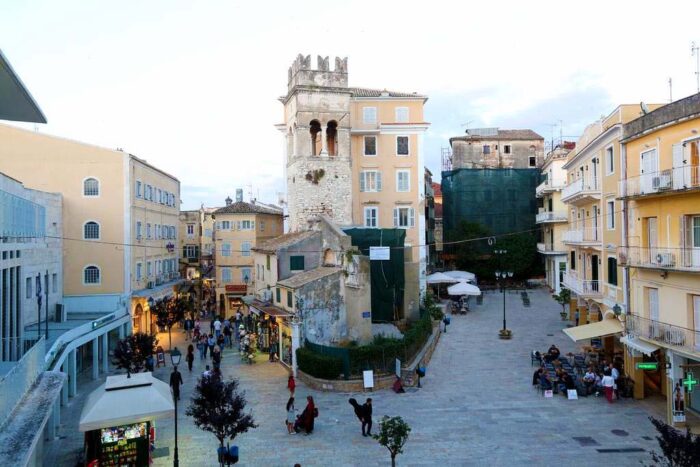
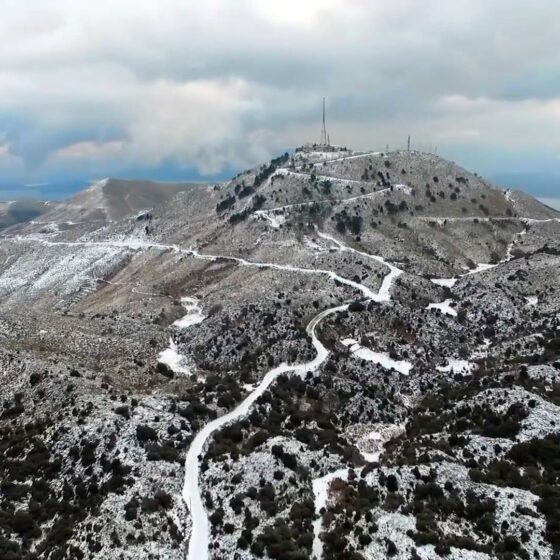
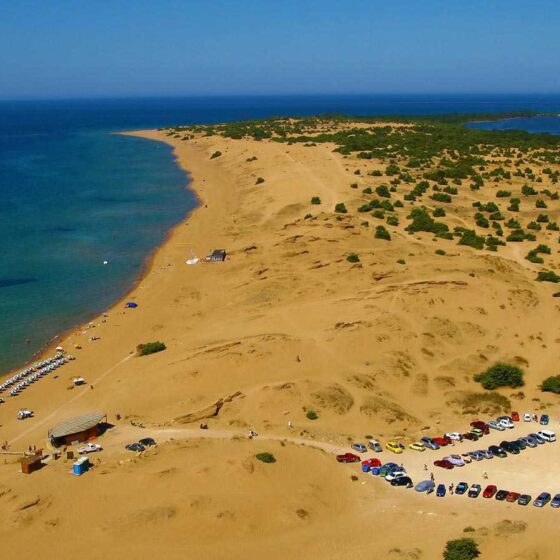



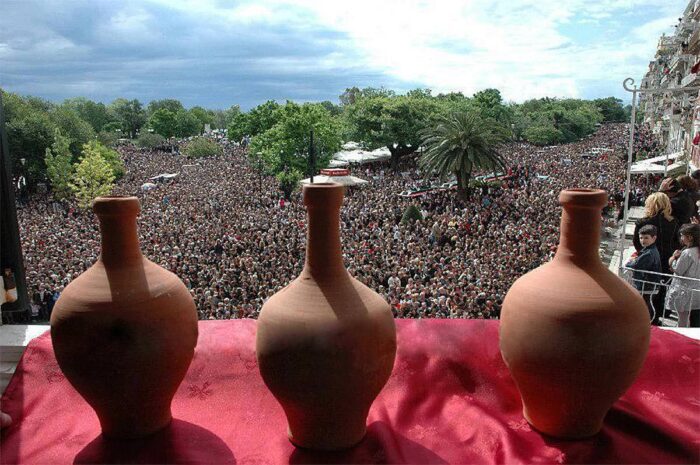

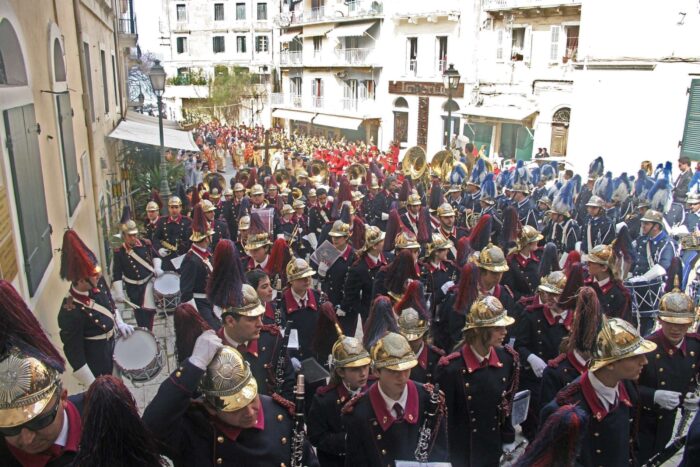
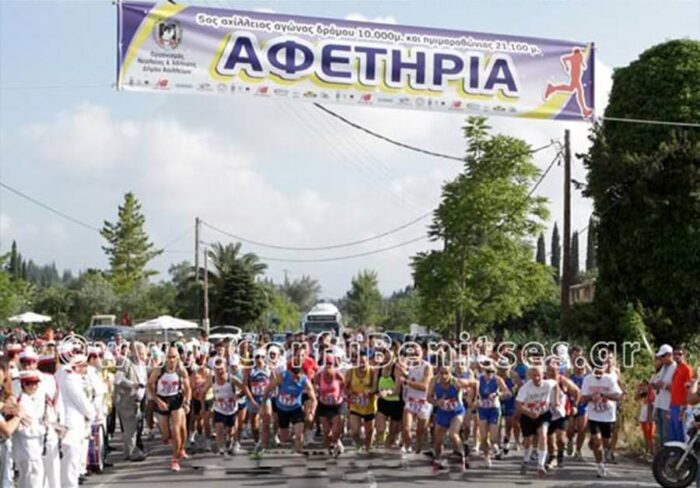
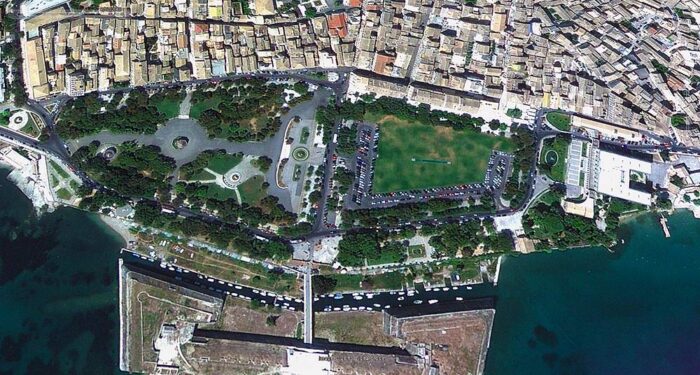





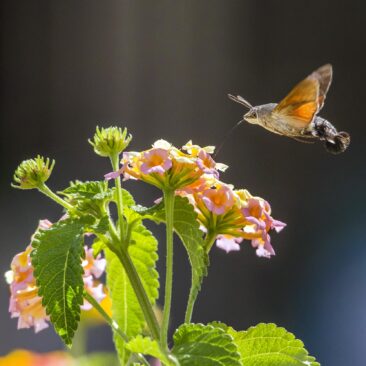

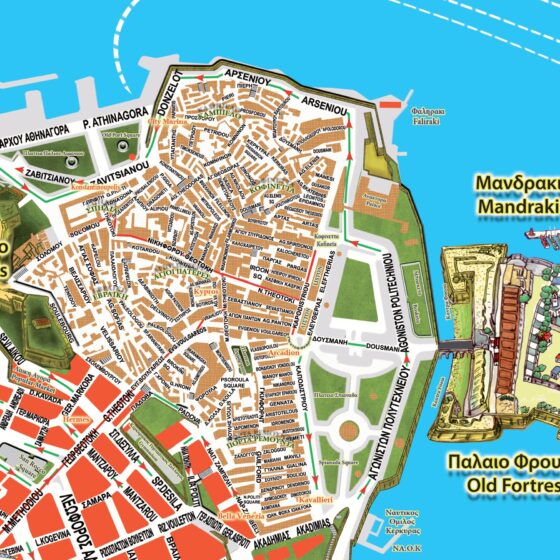

Comments